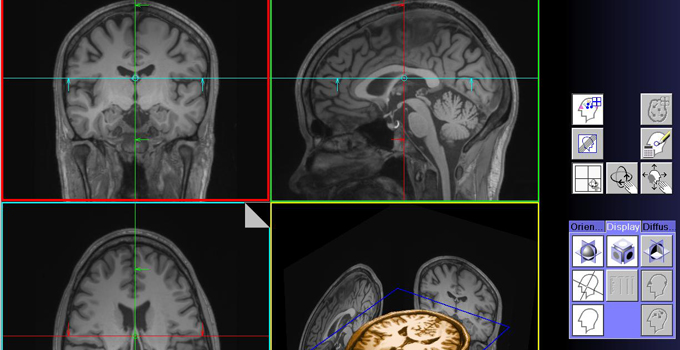My job can be accurately described by a five-year-old. People come to me because their heads hurt, and I try to make them feel better. I find joy in the simplicity of this goal, but accomplishing it is often easier said than done.
About 17.1% of women and 5.6% of men in the U.S. reported having migraine headaches, which are defined as a moderate to severe intensity headache that is usually throbbing (though it doesn’t have to be) with associated light or sound sensitivity and/or an aversion to eating during an attack.
About 1-2% of people develop chronic migraine (15 or more headache days a month)—and they represent a large portion of our patients at the UNM Health Sciences Center Department of Neurology, where we treat the most complicated and refractory headache cases.
But many patients with migraine aren’t taken seriously when they describe their symptoms. Migraine is an invisible diagnosis—there is no imaging or test that shows whether a patient is having migraines or why. Doctors of the past would often blame the patient, doling out dismissive responses such as, “It’s all in your head” or “You’re probably just dehydrated.”
Medical gaslighting is a common complaint in my patients, and I am saddened to hear that many patients are nervous or not excited to come see me, having been traumatized by past interactions with the medical field.
But times are changing. In the past decade, attitudes about headaches have begun to shift. Safe, effective medicines have been developed to treat and prevent migraine attacks, giving patients more headache-free days and a better quality of life.
Latest Developments in Migraine Treatment
“Triptans” revolutionized migraine care in the 1990s, but their vasoconstrictive side effect meant that patients with history of stroke or heart attack were not able to safely use them. These patients were stuck with conventional analgesics that were just as likely to cause medication overuse or “rebound” headache as they were to help.
Antidepressants, blood pressure medications, anti-seizure drugs, and Boxtox may relieve symptoms in some patients. However, these medicines don’t work for everyone.
Related reading: Migraine Headache: A family affair.
Gepants: New Migraine Medications
Gepants target the calcitonin-gene related peptide (CGRP), a molecule released from nerve cells that triggers migraine attacks. Gepants block CGRP receptors, relieving migraine pain without constricting blood vessels. Gepants do not cause rebound headaches—another win for patients.
The U.S. Food and Drug Administration has recently approved three gepants to treat acute migraine:
- Rimegepant (Nurtec ODT): A dissolvable tablet that can provide relief within 60 minutes and last up to two days. The most common side effect is nausea.
- Ubrogepant (Ubrelvy): Studies have shown this pill can eliminate migraine symptoms within two hours. Side effects may include nausea, tiredness and dry mouth.
- Zavegepant (ZAVZPRET): A nasal spray that relieves symptoms within two hours. Side effects include nasal discomfort and a bad taste in the mouth.
A fourth gepant, atogepant (Qulipta), is approved for treatment and prevention of migraines. Research shared at the American Academy of Neurology Annual Meeting showed that people with chronic migraines who used atogepant had an average of four fewer headache days per month.
New research suggests that some gepants may be effective for pre-migraine (prodrome). That means some patients can take the medicine at the first sign of migraine, hours before the pain starts.
Monoclonal Antibodies: Chronic Migraine Prevention
Monoclonal antibodies are lab-made injectables to target CGRP or its receptor, weakening the signaling pathway that causes migraine attacks.
Research published in July 2023 showed that anti-CGRP monoclonal antibodies helped 60% of people with chronic migraine revert to episodic migraines after 12 weeks of treatment. After 48 weeks, 80% of patients had similar results.
The FDA has approved four monoclonal antibodies to treat migraine. Erenumab impacts the CGRP receptor and eptinezumab, fremanezumab and galcanezumab bind to the CGRP molecule. All are injections (except eptinezumab, which is IV), with side effects that can include fatigue, nausea, constipation and upper respiratory tract infection, though these are usually mild and uncommon.
“Headache specialists ask questions and listen to our patients’ answers to make a diagnosis and treatment plan—it’s about believing people and caring for them, which is the central principle of providing health care.”
- Mark E. Pierce, MDHeadache Specialization: Rewarding and Predictable
While some neurologists seem to always be on call, there are very few headache emergencies, so my schedule is full but predictable. And with new treatments available and more patients getting relief each day, life as a headache specialist clips along at a consistent pace with something to offer almost every patient.
Migraine is a neuropsychiatric phenomenon that is so much more than pain—it changes perception and cognition. Someone tells me, “You’re going to think I’m crazy, but…” every single day before describing a common migraine phenomenon. Patients need to know they are not alone. We’ve seen it all, and it doesn’t mean your brain is broken. There is hope.
It is rewarding to give patients truly effective treatments as clinical attitudes become more modern. UNM HSC trainees who specialize in headache care can make a significant impact, intervening to give patients life-changing, long-sought relief. In this way, our work is a form of advocacy, helping right historical wrongs one patient at time.
